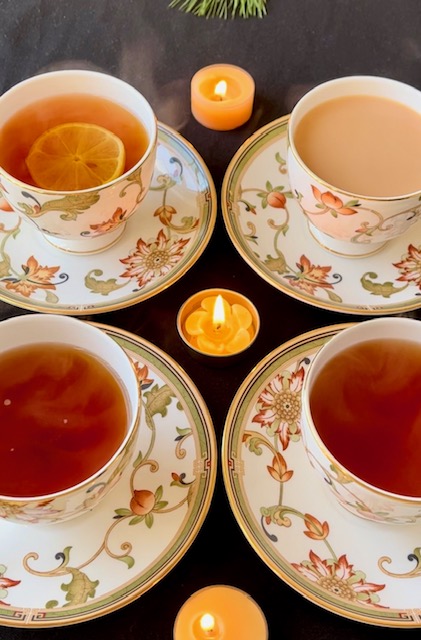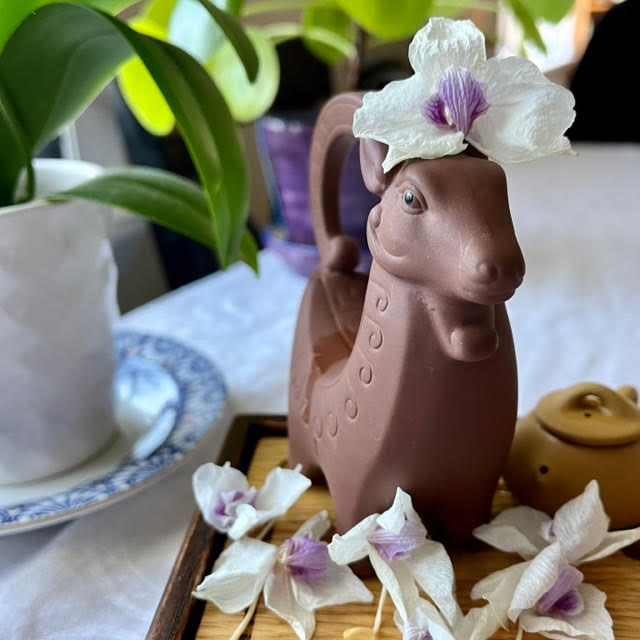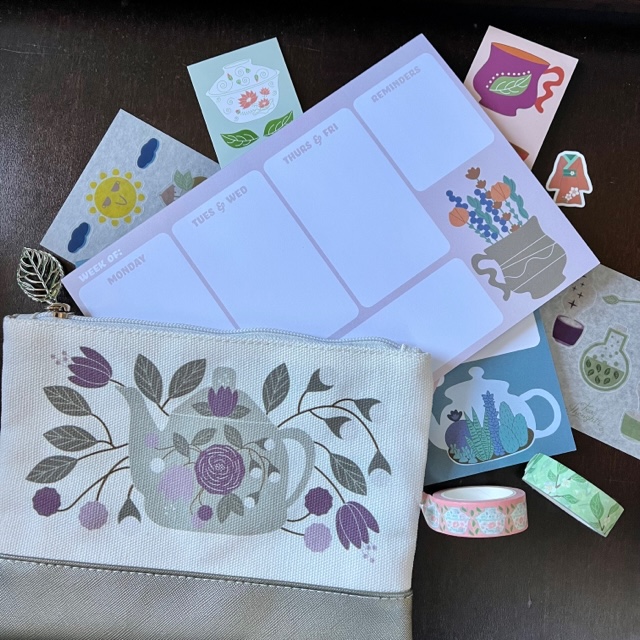Tea life has taught me a lesson…again! This time, the lesson is about beauty.
In this post, I share how my tea practice helped me realize the source of my reluctance to use a very practical tea accessory that is also beautiful.

Tea life has taught me a lesson…again! This time, the lesson is about beauty.
In this post, I share how my tea practice helped me realize the source of my reluctance to use a very practical tea accessory that is also beautiful.

The Virtual Tea Table is a space to gather online with other tea lovers and build pauses into our workweek. Read on for Traci’s dream for the group and how to join.
[The *Winter* Virtual Tea Table has ended. You can still sign up for the *June* gathering.]
If you follow me on social media or subscribe to Tea Infusiast News, you may have noticed that I have been trying to be more intentional about building restorative pauses into my day. Grind culture, unfortunately, makes this effort seem transgressive –particularly on “work days.” The Virtual Tea Table is part of my effort to invite other tea lovers on a journey together to create a better way.

This post shares how my relationship to tea has both deepened and become less serious.
Not too many years ago, I enthusiastically embraced the punch line of the following joke that you may have seen on social media.
“How do I take my tea?”
“Seriously. Very seriously.”
Indeed, a number of my friends even sent me this joke back then. But, I feel very differently now. Although I may be a “serious” tea drinker in one sense, it is no longer the whole story of my tea practice.

After losing my sense of taste while having COVID, I’ve pulled together some tips on how to enjoy tea when you can’t taste anything.
I read about people who lost their sense of smell and taste while they had COVID-19. For me, however, it was hard to fully appreciate what that would be like until I also temporarily lost these senses. Tea is an important part of my life. So, I was determined to find a way to continue to enjoy tea when I couldn’t taste or smell it.

This post shares more gift ideas for tea lovers, focusing on giving tea classes and the opportunity for online tea community. It is part II in a two-part series of gift ideas. (Post revied and updated on 11/24/23.)
So, you are thinking about gift ideas for a friend or family member who is a tea lover. This may seem counterintuitive, but giving tea can be a challenge unless you have a very good idea of what kinds of tea the intended recipient loves and what they already have in their cupboard. For this reason, the first post in this two-part series focused on tea-themed items like stationery, jewelry, and apparel. This second post likewise focuses on non-tea gift ideas for tea lovers. But, instead of tea-themed items, it highlights tea classes and opportunities to be part of an online tea community.

This post shares why I am launching a Tea Infusiast Newsletter in January of 2023, why you might want to subscribe now, and how to sign up!

This post shares tasting notes for three delightful teas from Teawala. Read on for my thoughts on their Khiri Gold (black tea from Thailand), Rice Oolong (oolong tea processed with an herb from Thailand), and Ruby Red (black tea from Taiwan).

Looking for gift ideas for tea lovers and aren’t sure where to start? This post shares some ideas for tea-themed items. It is part one of a two-part series. (Post reviewed and updated on 11/24/23.)

If you have bought your ticket, please join us for our rescheduled “Sip & Listen” edition of Story of a Teacup on January 14, 2023! We will join together online, settle in, steep tea together, and listen to four members of the #CommuniTEA share a story about a special piece of their teaware. (This event was rescheduled from November 2022.) I’m thrilled to welcome Taniya from Yoga, Tea, and Poetry as our special guest for this event! Nazanin from Tea Thoughts and Jeff from UNYtea will be joining Taniya and me as featured storytellers.
The proceeds, ALL ticket sales, have been donated to a nonprofit organization in Chicago, Erie Neighborhood House. This organization supports low-income and immigrant families. Among the many things it does, Erie House has also been providing direct assistance in Chicago to hundreds of people who have been bused in from Texas under Governor Abbott’s inhumane policies against immigrants legally seeking asylum at the southern border.

Meet the potter who creates turtle tea pets that have brought so much joy to the tea community.
If you follow tea accounts on Instagram, you may have seen the handiwork of potter Michell Hovey. She created the ceramic tea pet, Herb, and a number of other turtle tea pets that show up in the Instagram photos of various tea lovers.
